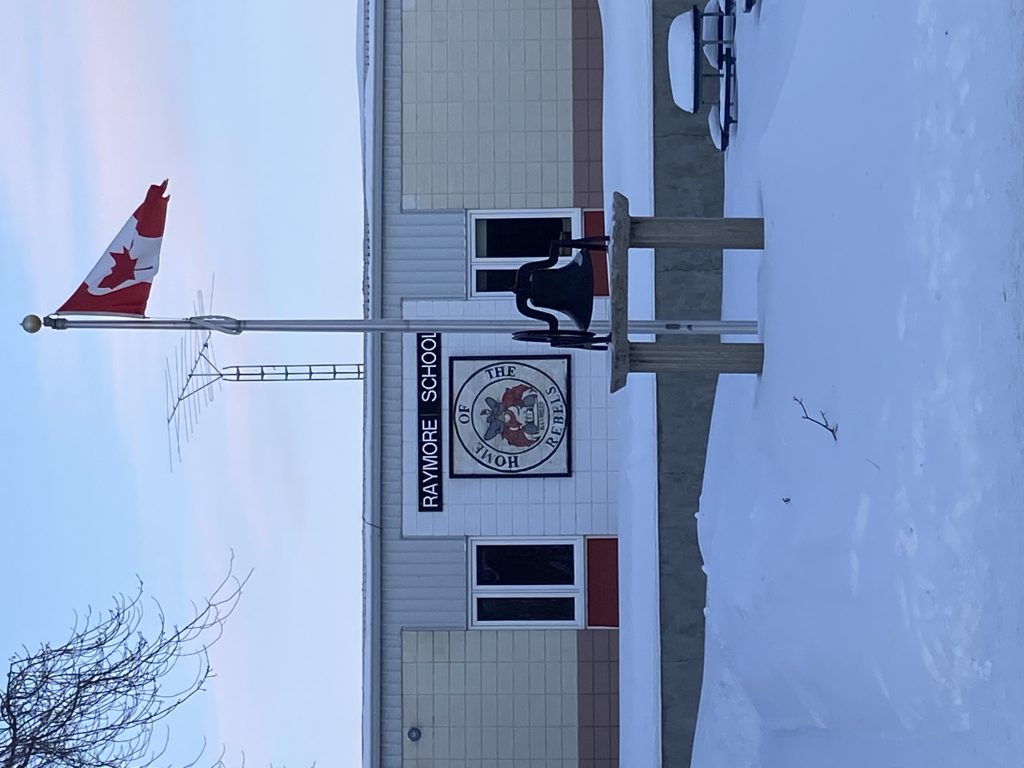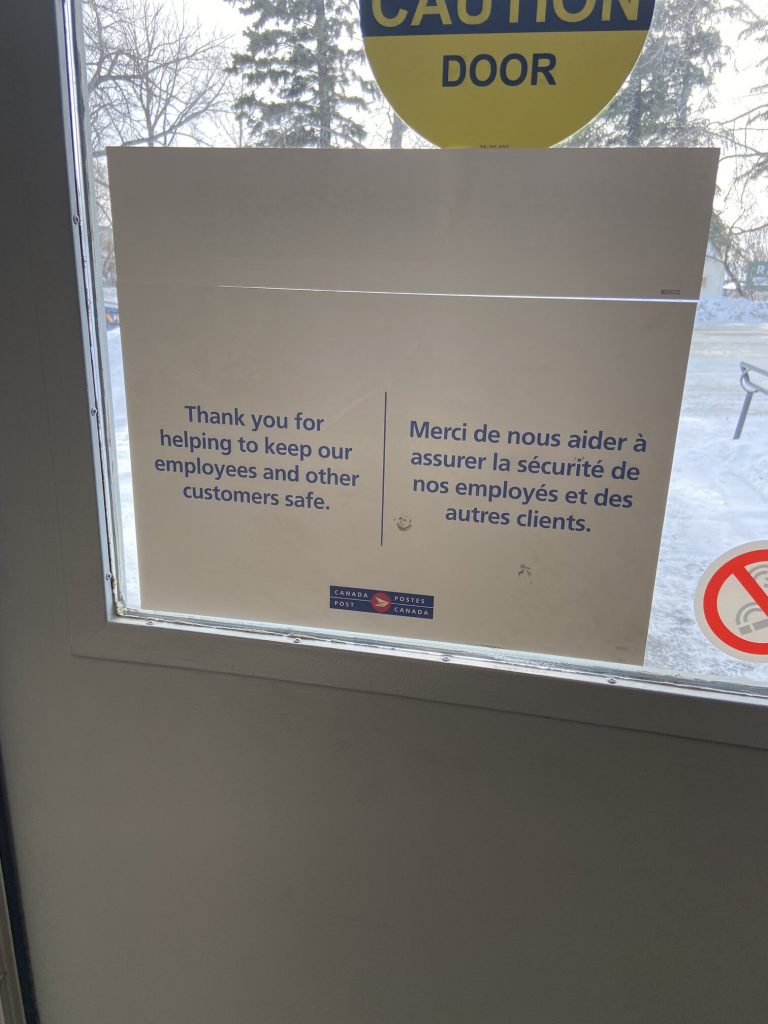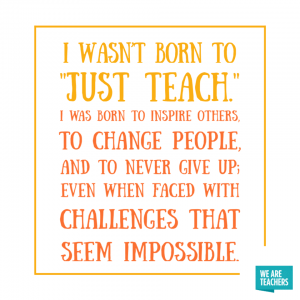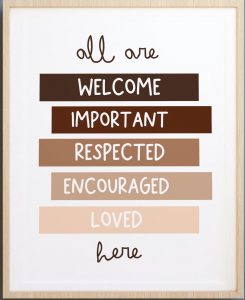- Canada day long weekend preparation
- Community Event “Raymore Summer Slam”, selling tickets
Day: May 21, 2021 (Page 1 of 2)
Through the first two weeks of ELNG 200 I’ve started to understand more on what the meaning of language awareness is and how to understand it for myself as well as bring it into my future classroom. Before we discussed the deeper meaning of Language Awareness, to me I believed it was knowing if you knew how to speak the language or not. Now I understand it is much more than simply speaking a language. Language awareness is noticing the small and big things in your everyday life such as, that in English we say a sentence one way, but in Spanish it is said backwards, example: Blue shoe in English is, shoe blue, in Spanish. Also, that there are many different “types” of languages in some countries, such as high French, or low French. When discussing language awareness in a zoom group, there was discussion that to be able to understand different languages, I took different classes in high school and university, such as French or Cree and one of my group members simply just asks her coworkers who speak a different language how to say particular words or to teach her words so she can understand more of their language.
I’ve come to realize that language awareness is not just being aware of who speaks what language and that there are many different languages. It is also to realize that in different languages words can have different meanings and we need to understand how to use those words or actions when talking to other people. While doing research for our Linguistic Landscape assignment I came to realize how many English-speaking signs are around my small town of Raymore although we are more than just an English-speaking community. A few stores are run by different background but yet have all English in their restaurants or stores. We have an electronic bulletin board at the end of main street that only shows English on it as well. It really made me stop and wonder to how many people are actually language aware of what is not only going around them but also in their community. If they notice the small changes that need to happen or pick up on the small differences in languages. This makes me excited for what is to come in this class and being able to bring more knowledge and understand of language awareness to my future classrooms!
When I was younger, the history of my relatives was not much talked about. Going into this assignment, all I knew was that I was part German, I spoke English and that was my first and only known language, and that was all the knowledge I had of my background without asking further questions to understand more. Getting the chance to learn more through this assignment and have a deeper connection with my relatives was an exciting moment for me and I knew there was no one better to talk to than my aunt. My aunt first shared with me that most of my relatives spoke German or Norwegian, some also spoke Scottish as well but that was only if they were “well to do”. These days none of my family speak those languages. We just speak English as that is how everyone was raised. Thinking about it now, it would have been interesting to learn how to speak Norwegian as that does not seem like such a common language compared to French, Spanish, etc. My aunt explained our knowledge for only one language like this, it was never a loss of our language, it was just at that time in my great grandparents’ lives, they looked at it as the right thing to do as they were coming to a new country and that if you had difficulties learning the language later on, this resulted in harder success in life. So, they chose to learn English but to them it was never a loss, it was just adapting to new ways. My aunt and my mother both pointed out that some words or meanings of words have changed since they were young. No necessarily the loosing of the language but the meaning of the words have changed. Words they used to say so freely are now frowned upon, which they knowingly understanding why today. But words such as ‘bortsch’ or ‘Cubase’ have still carried the same name through the years. They also discussed that technology has changed the understanding of language also. Instead of simply typing out ‘be right back’, kids use an abbreviation of ‘BRB’. I also pointed out that although I am still young enough that I should understand different terminology compared to them, some words I hear from my friend’s younger siblings I have no clue what they mean, which I than find out, the words are simply just made up and they put some type of meaning to it, which is something I never did when younger. They went on to say that their loss of native tongue was not affected to them personally but the change of language between generations has changed even since they were young.
My great grandpa came from ‘White Russia’ which was called that at the time because they did not want to be aligned with Russia. When my great grandma came to Canada it was a sign of prestige in the community for first generation Canadians to speak English, but if you did not speak the language or did not need to use it for your job, that usually reflected to you being poor. If you were poor, you spoke your own language. This statement my aunt made reminded me of what I read in the article by Haque and Patrick stating, the tremendous diversity among indigenous languages was accordingly seen not as a sign of the great cultural richness of indigenous communities, but as a barrier to language maintenance and education as well as to the accessing of government services. (Varjassy, 1964) This statement stuck out to me because of what I learned while listening to my aunt. Like I said above, when my grandparents came from Russian, it was said that if you talked in your own language and not English this resulted in you being considered poor. Just like the Indigenous languages were not a sign of richness but looked at as a barrier to learning new information in school and understanding life in Canada. Although my great grandparents decided to learn another language by choice, Indigenous people did not have that choice, their language was simply just taken away from them. This leads to another interesting point my aunt mentioned to me. She discussed that when the residential schools first started appearing, her family along with others, believed it to be cultural and that they were doing good for the Indigenous people, but they did not know back then what they do today about what happened in those schools.
Once my grandparents made it to Canada, they only spoke their language in the comfort of their own homes and used it only when necessary. This was not because they were hiding their language from other people who were around but more so for the fact that it was easier to get along with everyone in and around the community by speaking one language, which was English. I learned that my cousin who married a Greek man and who currently lives in Greece, he can speak his language but the places around him speak not only his language as well but a higher language than what he is used to but still accepting that this is the world we live in where people know more than one or two languages. Just like when the Indigenous people’s language was said to be impractical for modern Canadian life but also a barrier to both cohesion and communication. (Haque and Patrick) It seemed that this accusation was only because in the past, Canada could not accept more than English or French being spoken, which as a place that encourages diversity, was doing anything but encouraging diversity in those years.
Although I have not learned any new languages that I can proudly speak and know I am saying the correct thing. My aunt that told me all my family information has a house in Mexico with her husband. They have been going there every winter for six years or so, and in doing so they took it upon themselves to learn the language that is spoken and also to get to know the people. To learn the language, they listened to audio books, learned from google translate and also just asked the locals to teach them different words. They chose to do this for many reasons such as to help them learn about the people and the culture around them, to trade or buy items, to converse to other local people but the main reason she made clear to me was out of respect. That they were coming into a new country and although most spoke English as well as Spanish, it was only proper for my aunt and uncle to also learn their first language of Spanish. This showed the people that although they were coming as visitors for a few months, they respected their culture enough to take the time to learn and ask questions when they did not know. They also taught their granddaughters who are 5 and 3, how to speak some Spanish and the oldest is able to count to twenty in Spanish all by herself. She told me that she wanted them to understand how important it is to know more than one language and that if they are wanting to go places where it is not just English that is spoken, they will need to learn how to speak or at least understand that language out of a sign of respect. My aunt went on to say that if other family members or friends want to come and visit for a week or two, there are a few words or sentences that they also have to learn so that they can talk with the locals. Words such as, hello, goodbye, thank-you, were some of the simple words that would get you a little farther with the locals.
Learning about my language and why I don’t speak what was once spoken was interesting to learn about. When we discussed in class how the only way you could come to Canada was if you knew English or French it made me think back to what I learned with my family language. Maybe to my great grandparents they made it seem like it was their choice to learn English but it was actually just the way it had to be if they wanted to come to Canada. Either way, after thinking more about what I learned, I wish my family would have kept some of their language around so that although they could not speak their language all the time, they also didn’t lose it and could pass it on from generation to generation.



Resources
Eve Haque & Donna Patrick (2015) Indigenous languages and the racial hierarchization of language policy in Canada, Journal of Multilingual and Multicultural Development. https://urcourses.uregina.ca/pluginfile.php/2455265/mod_resource/content/1/Indigenous%20languages%20and%20the%20racial%20hierarchisation%20of%20language%20policy%20in%20Canada.pdf
SECTION 1: The zone I picked for my Linguistic Landscape assignment was the entire town of Raymore sask, which is where I live. I decided to pick the entire town due to it not being that big and I was interested to learn the history and explore more of it. I did not grow up in Raymore but I moved to Raymore from Melville Sask five years ago. Melville is considered a city but to me it will still be just a little bit bigger of a ‘town’ than Raymore is. The town of Raymore became a town in 1908 and the current population is a total of 575 people. In Raymore there is a variety of different ages. The majority of them are older, anywhere from 60-64 but there are slowly starting to become more younger people moving into the area as well. There are a lot of nurses and EMT’s in the town as well as teachers. The community of Raymore is an agricultural town which results in us having four big agricultural dealerships, Case IH, John Deere and Mazergroup, previously known as Raymore New Holland. Our community is made up of 75% of aboriginal population and the second largest aboriginal population is the Metis. Our town is also close to many aboriginal reservations so we have a diverse community of people. Although there are many different cultures around Raymore, I have come to realize that most of the community is made up of the English language.
While researching the history of Raymore, I kept finding myself coming across many articles about the bar that still stands today. This bar was built in 1911 by Archibald G. MacLean but by 1916 there were new owners, William “Bill” Baker and his wife Ida. These owners ran the hotel with the help of two Chinese cooks, a waitress and a porter. They held dances and fancy-dress parades but when the prohibition hit, the Bakers left and they sold the hotel to two Chinese, Mah Yuen and Ping Sam. In 1935 which was the year the government allowed the sale of beer. The two Chinese could not obtain a liquor license due to the law stating you could only obtain a liquor license if you could vote which Chinese could not until 1947. Through many articles this was the only mention of a different culture or language coming into Raymore. Another big part of Raymore is the Pioneer Museum which is a historical two one-storey, wood-frame churches that we moved into Raymore starting in1967 to commemorate Canada’s Centennial. The museum’s collection expanded which resulted in moving an old church from the town of Quinton just down the road to provide more space for displaying artifacts.
http://hotelhistories.blogspot.com/2015/03/the-raymore-hotel.html
https://www.historicplaces.ca/en/rep-reg/place-lieu.aspx?id=7426
SECTION 2:
| English | French | Bilingual | First Nation Language |
| 20 | 2 | 2 | 0 |
| Store-front | Bulletin board | Street Signs | Building Signs | Poster Signs |
| 4 | 4 | 7 | 0 |
SECTION 3: Throughout this process I believe that due to the majority of my pictures being of English language, Raymore proves to be more of a one language town, or monolingual. There are not many diverse languages being spoken in Raymore which results in less posters, signs etc. being in more than one language. Although there are many different cultures in Raymore and surrounding area, through all the pictures I took or signs I came across while on my walk or driving around; I would expect that English would be the most spoken language. Other than the two poster’s I saw in the post office with both English and French printed on them, I have never personally heard someone speak French in Raymore, but that does not mean that people don’t speak it. The most common language I would expect to hear in Raymore is English with the occasional time being Chinese due to having Chinese owners in our bar, a grocery store, a restaurant as well as the Esso/restaurant. There is a possibility of Indigenous languages spoken as well due to Indigenous people being in and around the town. As I drove or walked around town, I realized just how many English signs there were and how little of any other language was present, although there are other families who speak different languages in town. I believe that the languages in the pictures I have taken do represent my own linguistics identity due to the fact that I only speak English and 99% of the signs were in English only. With so many signs being in English form, it seems to be that it could be considered the main spoken language in other small towns other than Raymore. I believe this could be due to the fact that lots of small towns seem to have the same family history, and therefore like to raise their families where they were raised, which results in only one main spoken language.
This linguistic landscape shapes me with being confident in my own language but also being aware that there also needs to be more signs with different languages represented for new comers, tourists or just to acknowledge the people that speak more than one language in and around our town. While going around town I came to realize that there must be many children in town due to so many signs about children playing or school zones. This shows that the community is growing with different cultural families and will continue to thrive as the children get older, which means that the signs also need to become more diverse as the community continues to grow. The power to determine what languages appears in signs I believe is the people of the community. This would possibly include; the mayor, town committee or counsel, the residents and anyone else who has a right to an opinion. When you live in a village, town, or city, I feel you should have some type of right in voicing your opinion about anything that goes on, this includes the type of signs that go up for everyone to better understand the people that live in the community. This might be easier to achieve in a smaller town due to everyone knowing each other and being able to get your opinion across. I also think that the people or families that have immigrated to Canada or people that have chosen to learn a new language just to understand it more, should not suffer with having to know English to read the signs. When people go on vacation, if there is not a translation for your language somewhere on a sign, it is extremely hard to understand where you are going and how to get there. This is the same concept for people in Canada. Each village, town, city should be more accommodating to the multilingualism in their communities and post more than just English on signs. To me a small community like Raymore is looked at like a big family and family fight for what is right and what is right is to have more signs to acknowledge the different cultures and families in the community. I feel this is important because they also help contribute in the day-to-day tasks that make up the community everyone lives in. If signs are needed to be put around the community, Mayor and Council are the ones who will decide on this, as well as the language put onto said signs. The acknowledgment of changing the signage is a simple step to show that the community welcomes diversity and does not shy away. It also shows we are accepting of all backgrounds and welcoming new understandings of who truly lives in our communities. These changes do not just simply have to mean signage on a building or store front, but can also be shown by our Chinese store owners bringing in and embracing their culture in the actual store itself. This can be done by posters, pictures, music etc. This also allows other people to be able to embrace different culture and gives hope that people may want to learn their language as they learn ours. While doing this assignment, it truly opened up my eyes to the signs around my community. I find it shows just how monolingual we seem to be even though there are many multilingual families as well as different families of culture in and around our community. This made me think about how little we truly acknowledge the different cultures and people around and, in our community, even though we are mostly an English-speaking community. Acknowledging that there are more people that could come into a community with different cultures and languages is a small step in welcoming anyone into a new village, town or city. I believe with the right direction and determination, our community of Raymore as well as many other places, can begin making small changes that will be able to include all cultures in and around the community. This will help to make everyone feel more accepted and like they are understood and belong.





